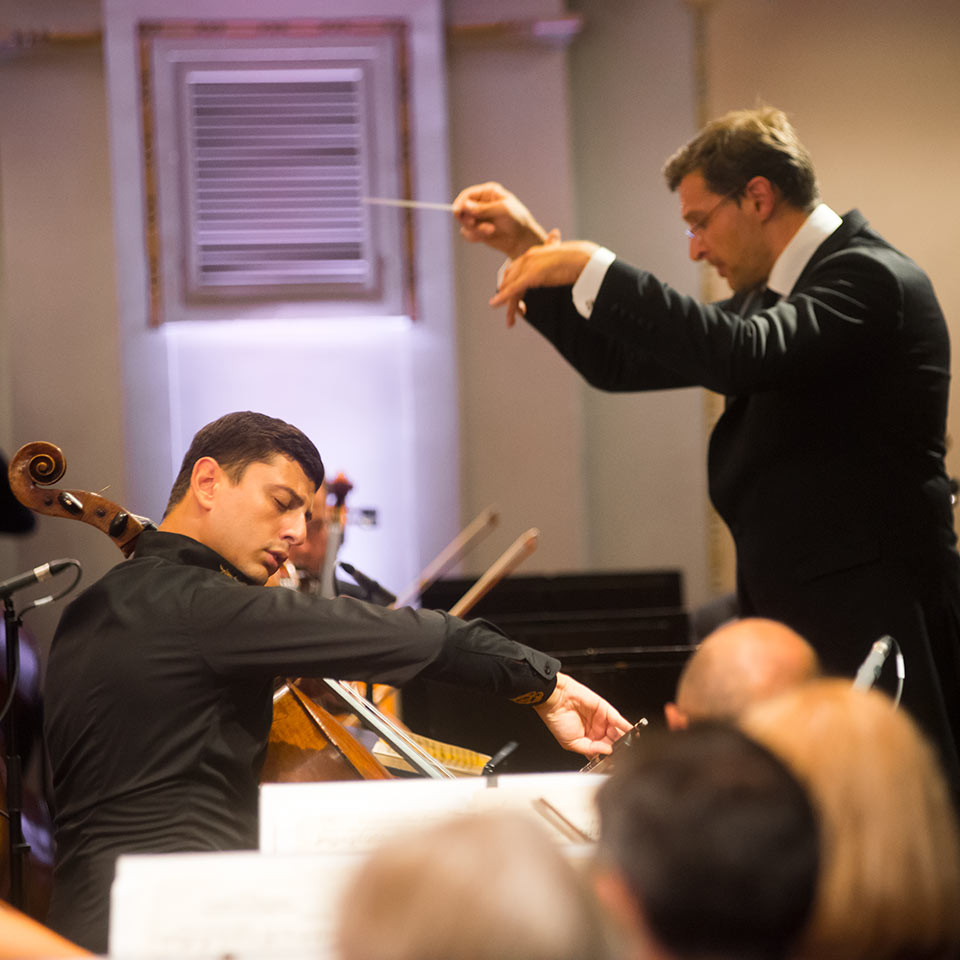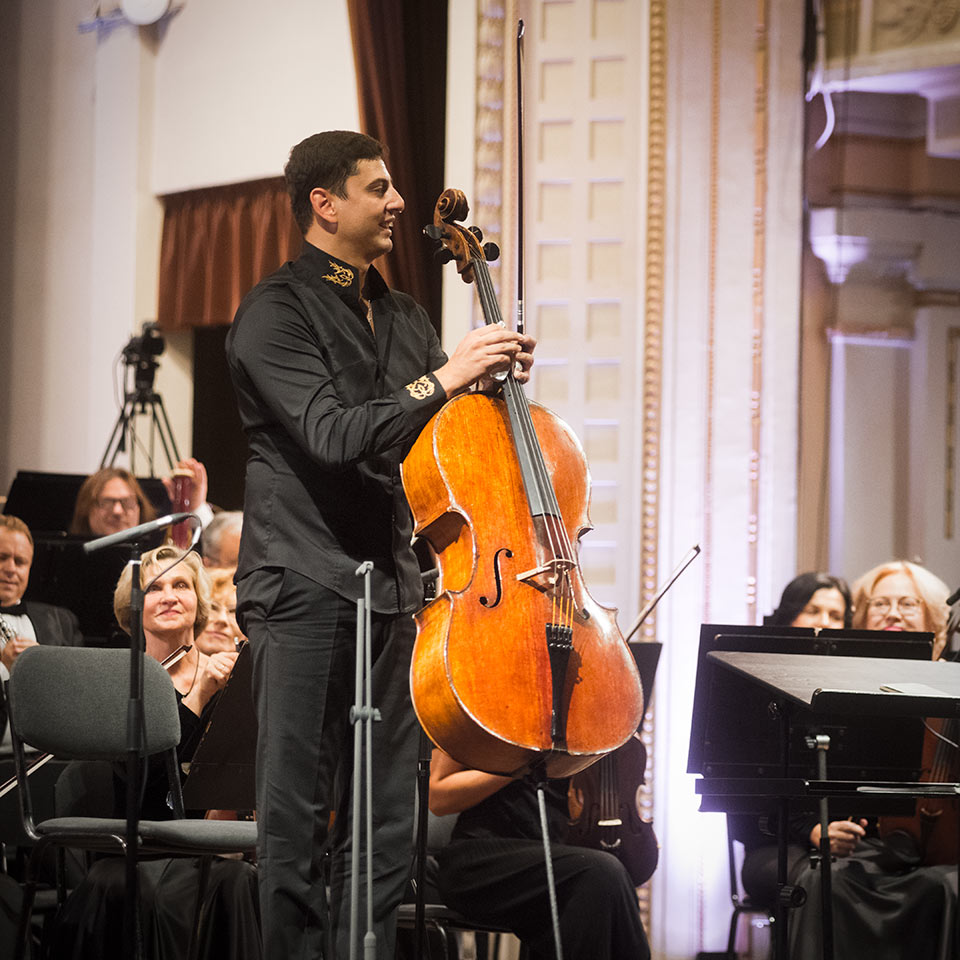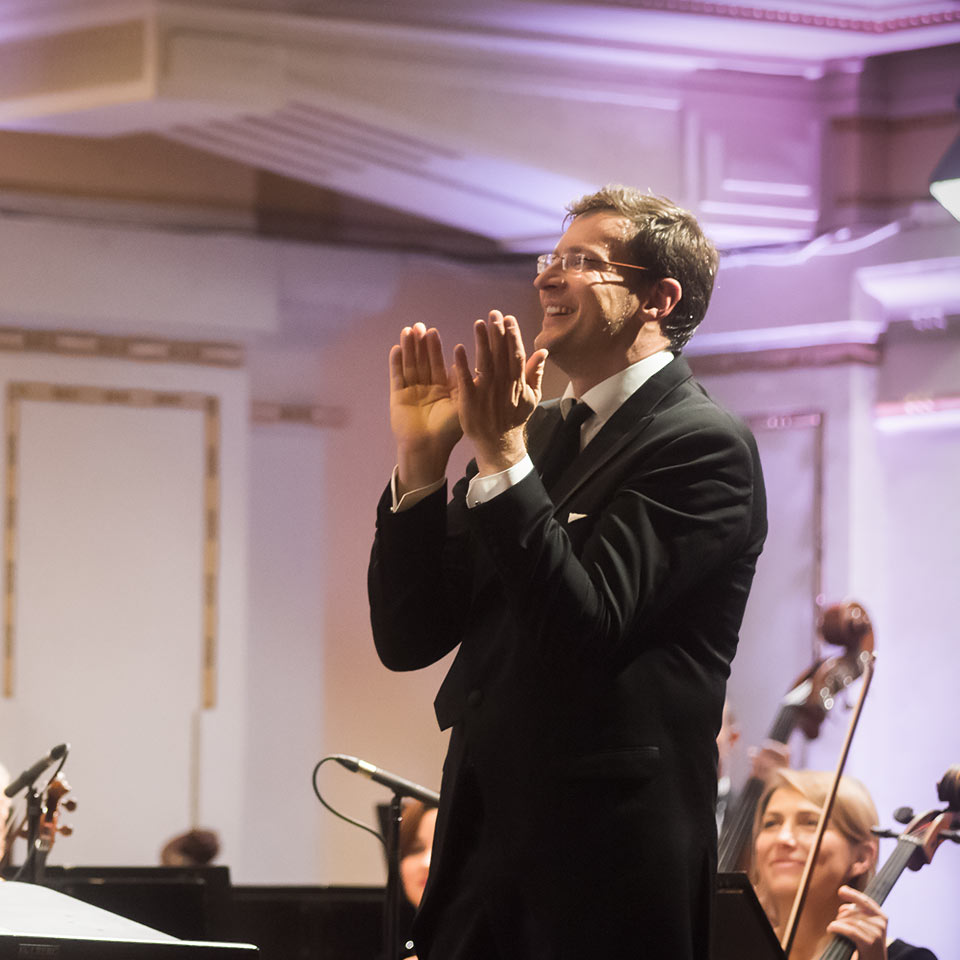PIOTR TCHAIKOVSKY
Rococo Variations for cello and orchestra, Op. 33
Piotr Tchaikovsky, an idiosyncratic and distinctive 19th century Russian composer, an exceptional figure of Romanticism, greatly influenced not only the development of Russian, but also Western European music. Some appreciate Tchaikovsky’s music for subtly conveyed human psychological world and philosophical reflections, others for songful melodies and lush orchestral sound. Variations on a Rococo Theme, Op. 33 for cello and orchestra occupies a special place in the composer’s copious creative legacy. The work was commissioned and first performed by the German cellist Wilhelm Fitzenhagen. The premiere took place in Moscow on November 18, 1877. Variations on a Rococo Theme is an example of the gallant style, otherwise known as Rococo, features of which can be found in the early works of Mozart. Tchaikovsky felt great sympathy for this genius. One feels Mozart-ish lightness, transparency and simplicity in Tchaikovsky’s opus, the soloist’s part of which demands great precision and scrupulous performance of virtuoso passages. The piece consists of an original Rococo-style theme and eight (seven in W. Fitzenhagen’s version) variations separated by the orchestral ritornelli.
The solo part is played by Armenian cellist Narek Hakhnazaryan, the winner of the first prize and gold medal at the 14th International Tchaikovsky Competition. He has already given performances all over the world with the most important orchestras and established himself as one of the most outstanding cellists of his generation. In the Lithuanian National Philharmonic 78th concert season’s opening concert, Hakhnazaryan shares the stage with the Lithuanian National Symphony Orchestra. Conducted by maestro Modestas Pitrėnas.
PUBLISHED: 2018-09-14
ORCHESTRA: LITHUANIAN NATIONAL SYMPHONY ORCHESTRA
CONDUCTOR: MODESTAS PITRĖNAS
CELLO: NAREK HAKHNAZARYAN





